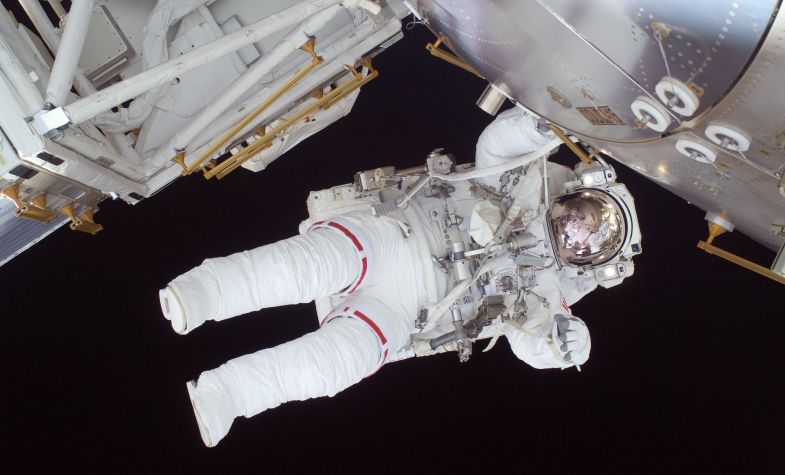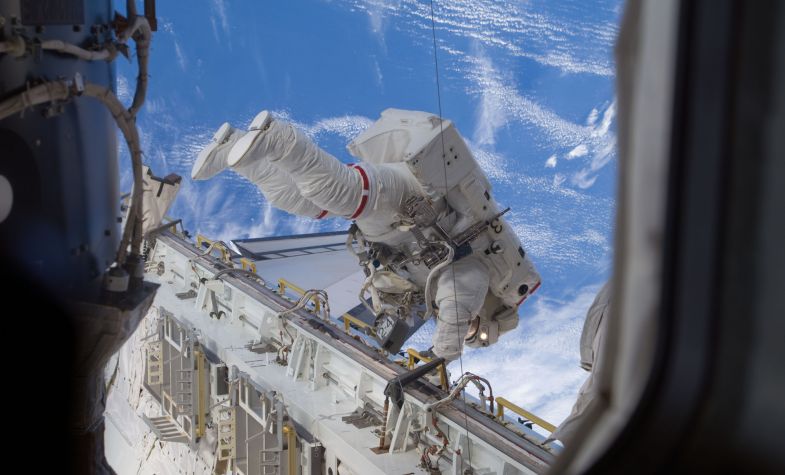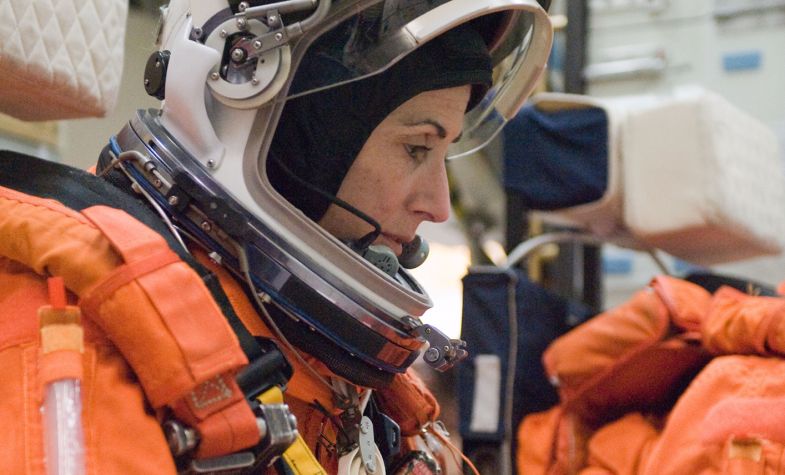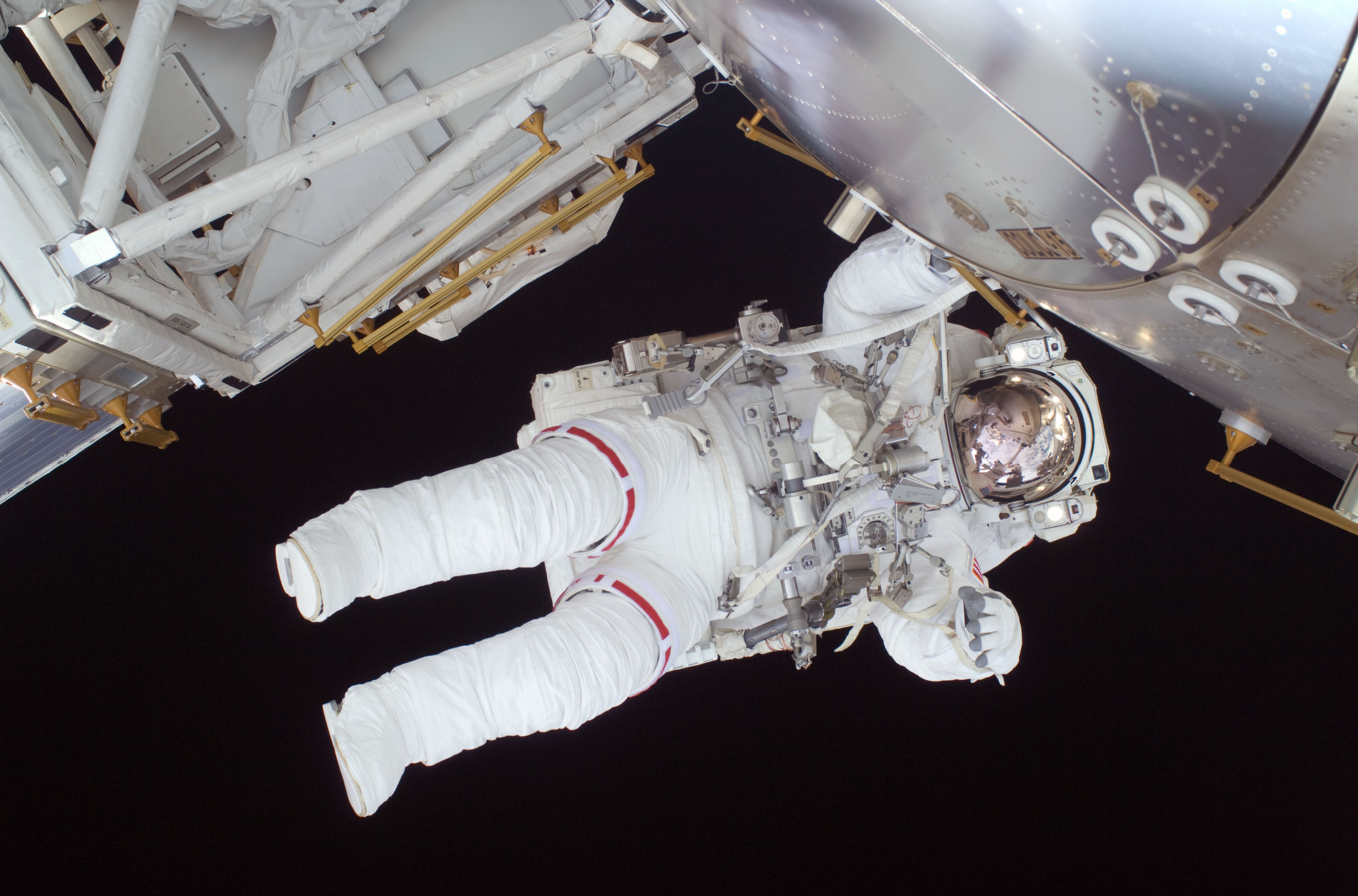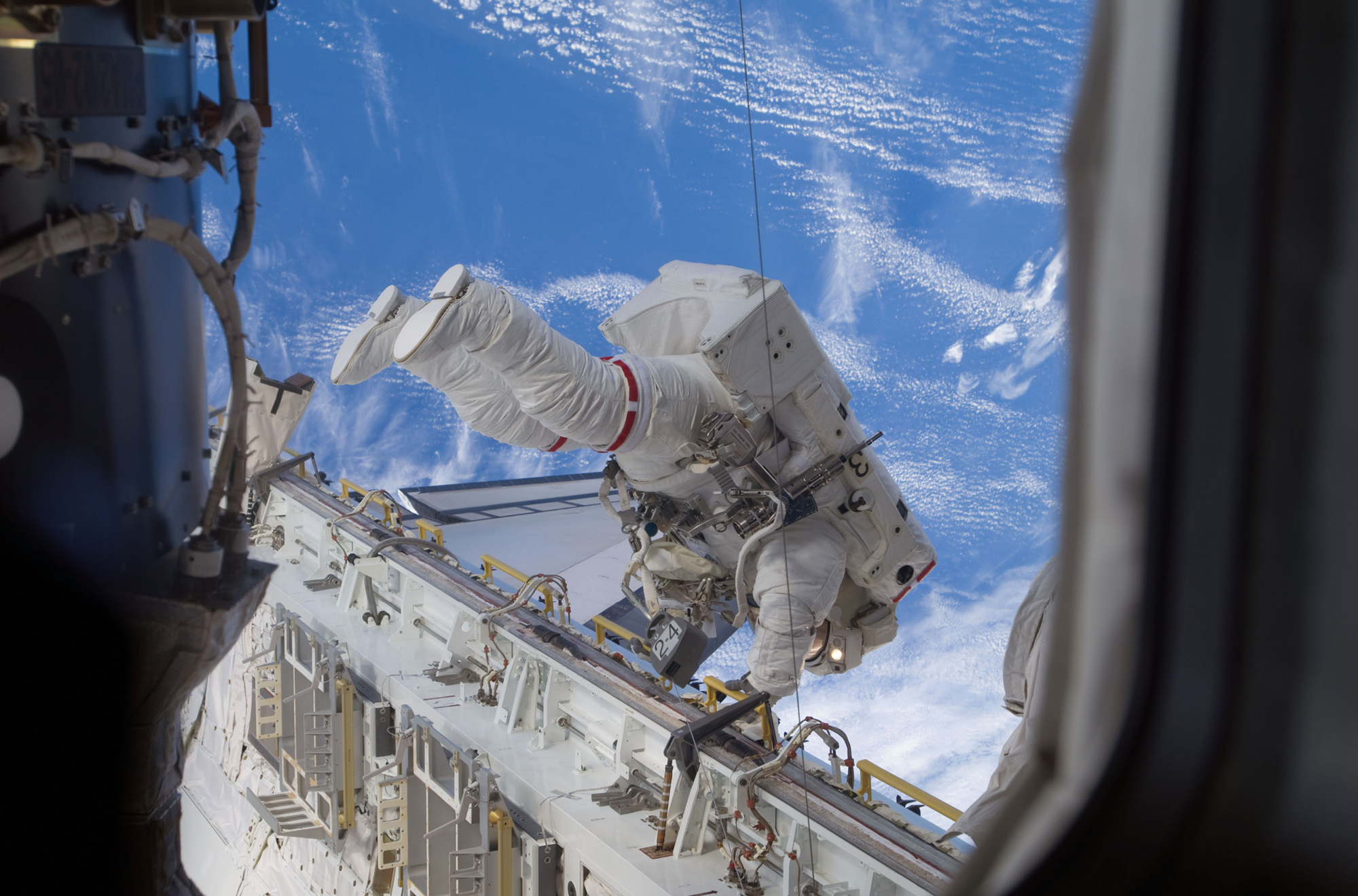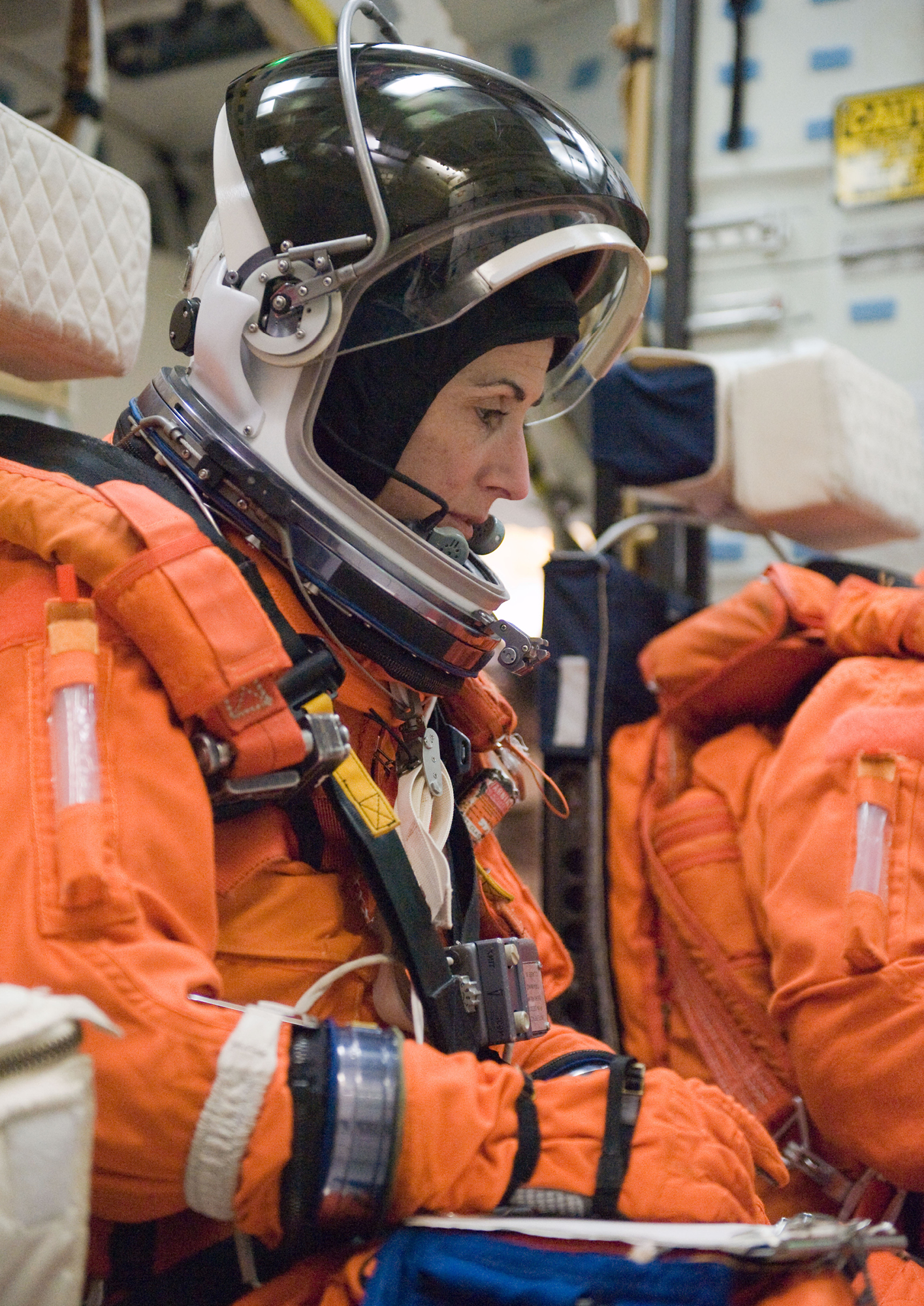Fifty years ago, on 16 July, the Apollo 11 spacecraft lifted off from Kennedy Space Centre in Florida with a three-man crew. On 20 July, the craft landed on the moon and two of its crew became the first men to set foot on the moon. To celebrate the 50th anniversary of the Apollo 11 moon landing, we are speaking to a different astronaut every day to find out just what it takes to make it to outer space.
Nicole Stott is a former astronaut, an aquanaut, artist and educator with 28 years’ experience at Nasa, where she flew missions on the International Space Station.
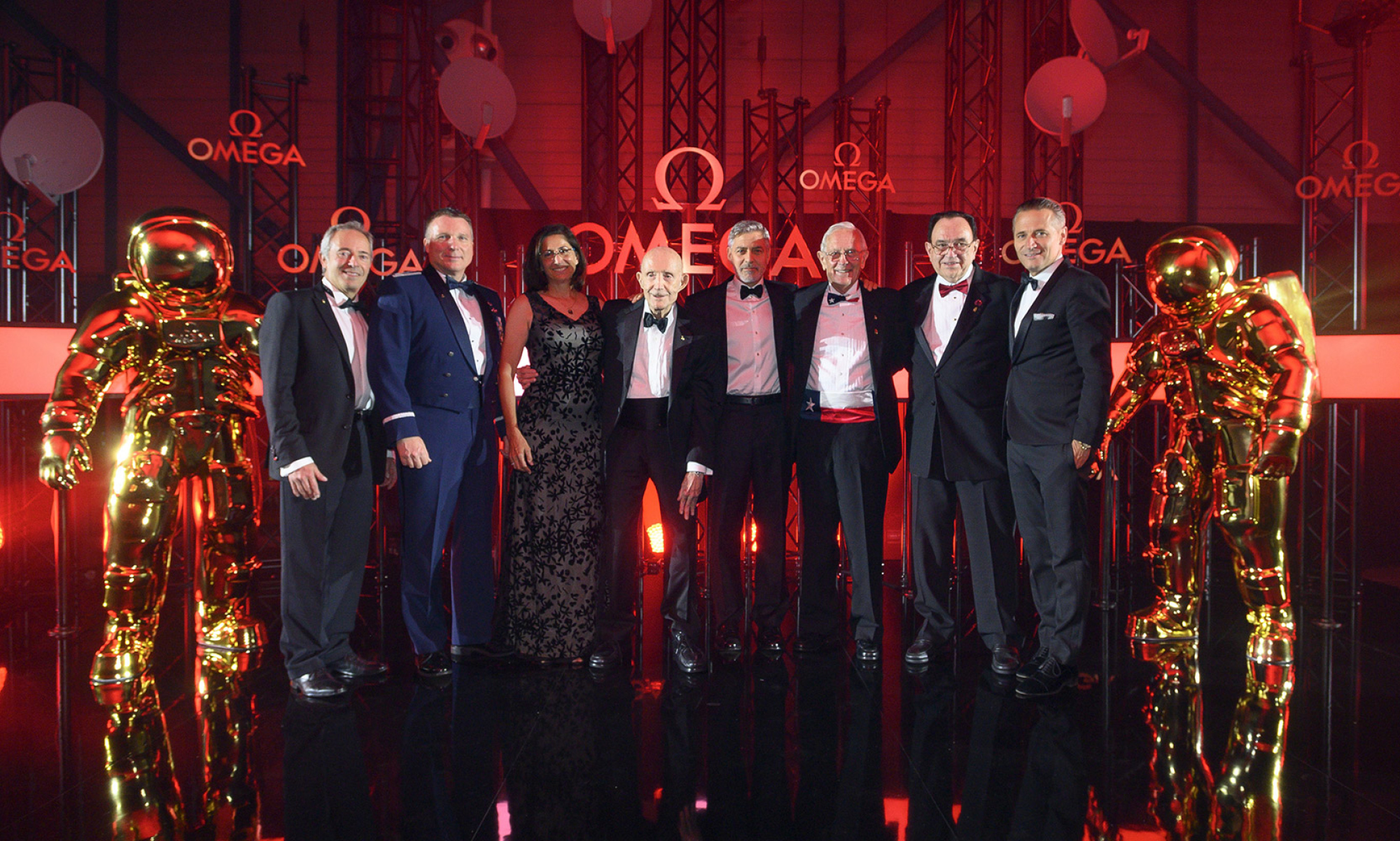
What we can learn from space
For the past 20 years we have been flying on the International Space Station as crews of six that represent 15 different countries across our planet. The five space agencies are the Russian Space Agency, Nasa, European Space Agency, Canada and Japan. And within the European Space Agency about 11 different countries are represented. We fly as one group on the Space Station, and at any given time you could have a Russian commander, a US commander, a Belgian commander, Japanese, Canadian, it just rotates through, and you’re all one crew on the Space Station. And somehow we have figured out how to peacefully, successfully do that in space with that crew. It’s not just that we work together, but we built this masterpiece in space that just hangs there and goes around the planet about 16 times a day, and works, and is the most off-the-grid place you can imagine: this life-support system we built in space. And there are tens of thousands of people here down on the ground across those space programmes, peacefully, successfully working together to make it happen. It is absolutely the best example of how we should be living, working together here on spaceship Earth, as the crew of spaceship Earth. And although it’s a matter of scale, for sure the planet is much bigger – 7 billion is much bigger than 6 – but I think we can do it.
Memorable moments
The best space story is the one that’s outside your window in space. I think nothing prepares you for that. We all look at the pictures and videos before flying, and we all talk to our colleagues who’ve had a chance to do it before and they all share their stories on how amazing it is. This is a place where, looking out the window, you’re seeing your home planet in a way that you’ve never experienced before. That’s not just from the standpoint of how overwhelmingly, incredibly beautiful it is, it’s also from the standpoint of being separated in a way where you feel more connected. Finally understanding that, oh my gosh, I live on a planet and I’m an Earthling, we’re all Earthlings. The only border that matters is that thin blue line of atmosphere that blankets us all, and having that become a reality, of the who and where we are, that’s the best space story I can think of. The lesson that comes from getting to experience that view is that idea of what home really is, out the window.
Planet Earth
December will be the 50th anniversary of Apollo 8, which was the first time we saw Earth with human eyes – you’ve got this spacecraft circling the moon, and they come around the moon and here’s us, rising above the horizon of another planetary body. The first time humans are seeing this earthrise image. And I don’t think it’s coincidental that a year later was the first Earth Day, and a year after that was the formation of the Environmental Protection Agency. I think those are very intimately, closely linked. I think what’s happened though, in that 50 years, is that we’ve become so used to it – right here on your phone, like every day, you’ve got that image in front of you. It’s almost like we’ve been distracted or we’ve forgotten the who and where we are in space; and that’s why I think the International Space Station is so wonderful. Here’s this purpose-built life support system, this closed-loop system in space that we built so humans can live and function there, and do science there. And it provides us with clean air and clean drinking water, and it has power from the sun and all the things we need to survive. And we did it in a way that tries to mimic what Earth does for us naturally. This “spaceship” that we have in space already is called our planet, and what we’ve done in space [on the International Space Station] is we’ve purposely decided that we’ll be acutely aware of how we manage our resources, and we haven’t done that down here. And I think the exploration of space, images of earthrise and what we’re learning through the technology of space is providing us with all the information we need to work together as this “crew” to manage our closed-loop system here on Earth. I think it’s absolutely critical to the communication of what Earth is for us. And Earth is going to survive us, one way or another. So we would do well to start paying attention to the aspects of this planet that are our life support system.
The most useful accessory for an astronaut
You’re going around the planet at 17,500 miles an hour, 5 miles a second – which means every 90 minutes you’re doing a full lap and getting 16 sunrises and sunsets out the window every 24-hour time period. Sunrise and sunset is what you associate with day and night, so how do you keep track of time? How do you manage your day? Besides “my stomach is telling me I’m hungry, it’s lunchtime”, or “I’m tired, so I go to bed”, you have to maintain a schedule. So the Nasa-issue Omega Speedmaster Skywalker X-33 watch was what did it. It governed everything from the day-to-day activities to that view out the window. The story of my watch in space was really to do with that view: you are absolutely sucked into the vortex of that beauty out the window, and if I would go to the window during the day – during the work day – I had to set my timer on my watch to remind me to go back to work. Thankfully the Speedmaster has this really wonderful loud alarm to remind you, “Oh, back to reality!” Go clean the toilet or do the space walk, or whatever it was. It’s all part of life up there.
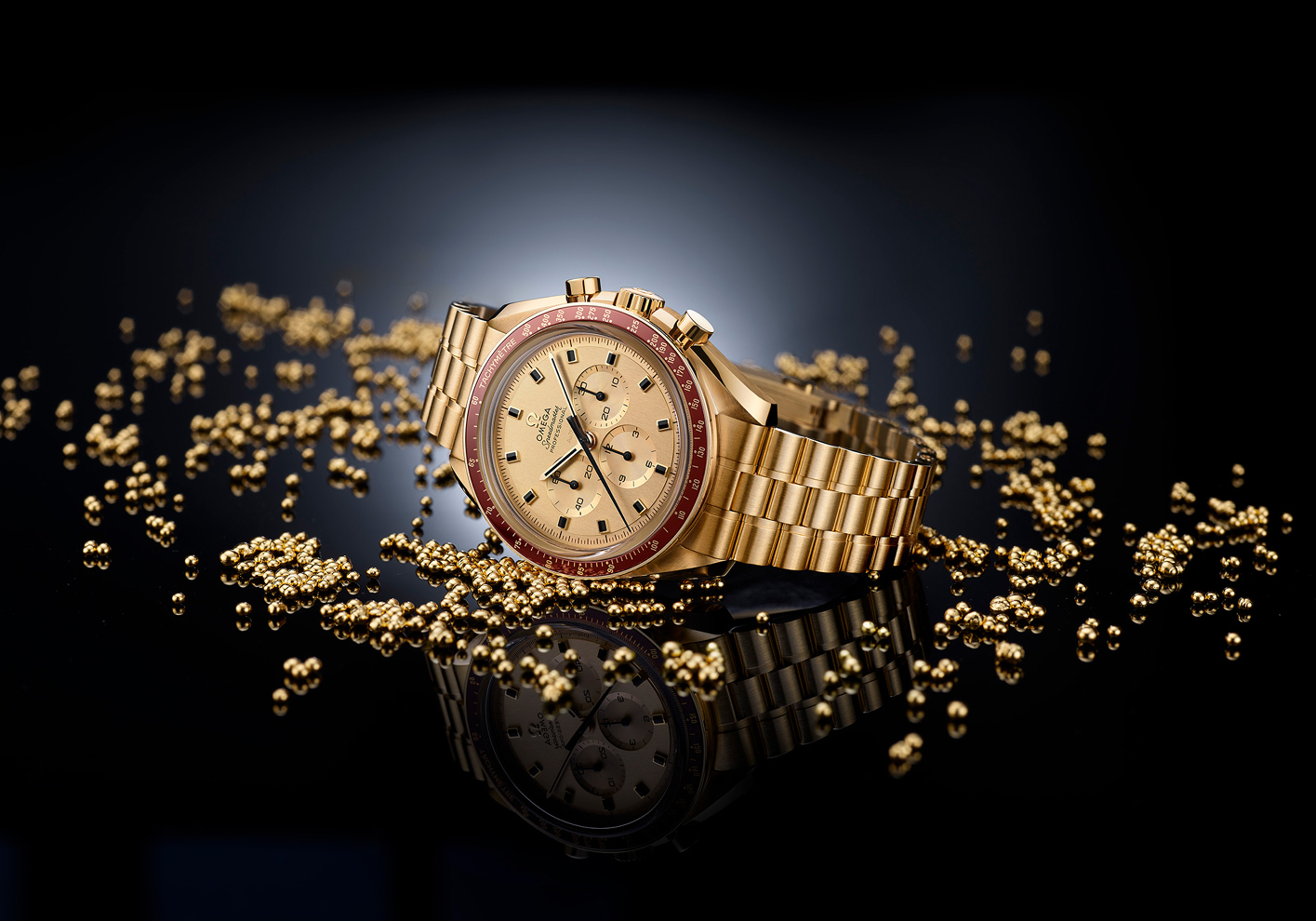
Space fact
Since 1965, the Omega Speedmaster has been the official watch for every piloted Nasa mission, and was worn by both Buzz Aldrin and Neil Armstrong when they became the first men on the moon during the Apollo 11 mission in 1969. It is the only piece of equipment that has been used in all of Nasa’s piloted space missions, from the early days of Gemini to the International Space Station programme of today. Every astronaut of every nationality is now issued with two models: a mechanical Speedmaster Moonwatch for EVA (extravehicular activity) and a digital Speedmaster X-33 for use in-spacecraft. To celebrate the 50th anniversary of the moon landing, there is a gold version of the Speedmaster that replicates a model made to commemorate the event in 1969. That edition was restricted to 1,014 units and the new edition has the same number. It also features a piece of lunar meteorite on the caseback to represent the moon.

